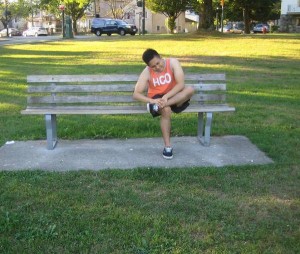An eversion ankle sprain is considered uncommon and develops once the ankle rolled inwards excessively. This injury is often associated with a fracture on the fibula. To learn to recognize and manage muscle injuries including an eversion ankle speain, enroll in a first aid course today.
Symptoms
The individual will know when he/she sustained an ankle sprain. There is immediate pain on the interior of the ankle after twisting it. It is important to note that there is rapid swelling and bruising. There is also difficulty in weight bearing along with limited movement. When it comes to moderate to severe cases of eversion ankle sprains, an X-ray is always required so that the doctor will rule out possible fractures.
Close look on an eversion ankle sprain
An eversion ankle sprain involves a tear on the deltoid ligaments on the interior of the ankle. It is often called as a medial ankle sprain. It is important to note that these ligaments are responsible for providing support in order to prevent the ankle from spiraling inwards or everting.

Remember that it is rare for the deltoid ligaments to be sprained due to two reasons. The fibula tends to prevent the ankle from moving far enough to sprain or over stretch the ligaments on the interior of the ankle. It will not allow the foot to move far enough to cause damage. Another reason is that the medial ligaments on the interior of the ankle are sturdier than the lateral ligaments on the exterior.
Due to this, an eversion ankle sprain is often linked with a fracture involving the end of the fibula bone that can be felt as the bony region on the exterior of the ankle. Other bones in the ankle such as the talus can also end up fractured during an eversion ankle sprain.
Treatment
The primary treatment typically involves the PRICE method. Always bear in mind that rest is vital both right after the injury was sustained as well as during the healing process of the injury. If the individual continues to play or engage in any activity while it is sore, it will increase the swelling and even disrupt with the healing process.
All you have to do is to apply an ice pack right after the injury. The ice pack should not be applied directly over the skin but must be covered with a clean cloth or towel. The ice pack must be applied for 10-15 minutes every hour during the initial 24-48 hours and reduce the frequency as the symptoms start to improve.
Compression using ankle taping or a compression bandage will protect the joint from further injury and minimize the swelling. Elevating the affected limb will minimize the swelling at the site of injury.
It is important to note that the treatment must continue until the bleeding has stopped. Further treatment typically involves restoring full mobility and strengthening of the ankle to prevent future injuries. Mobility exercises can start as soon as the pain allows in a forward and backwards motion to avoid stressing on the healing ligaments. Once the injury improves and pain allows, the individual should engage in ankle strengthening exercises to help improve proprioception particularly wobble board exercises.
